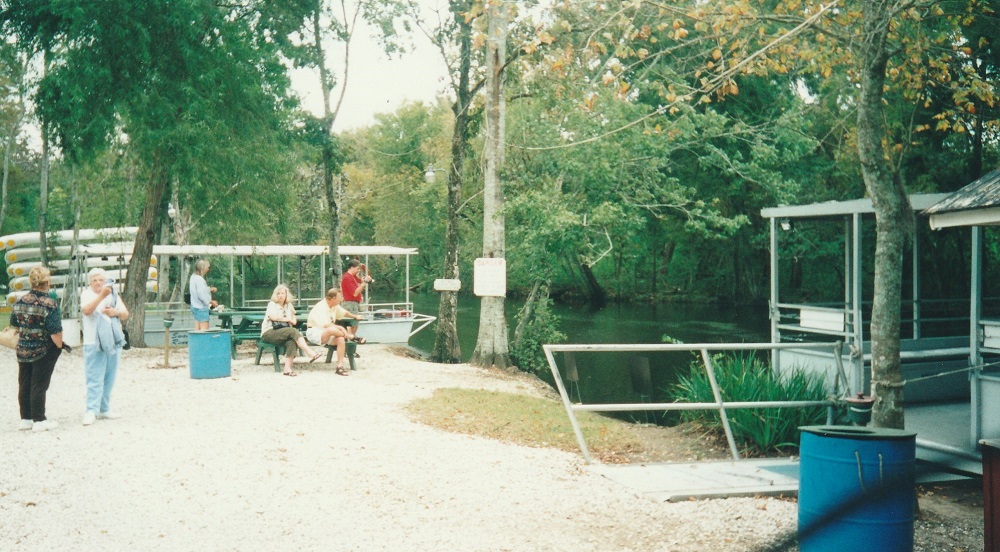
To my surprise, Terry wasn't too hung over the next morning (just a little). The first order of business on this day was a swamp tour. Again, it was one recommended by Todd (I refused to allow myself to be so cynical as to wonder about kickbacks - everything Todd recommended was worthwhile). A driver picked us up at the inn, and drove us west out of the city to a swampy area on the western shores of Lake Pontchartrain.
The driver was a friendly and amusing guy, who kept us entertained on the drive. In the first place, he stopped at a candy shop, and came out with a bag full of sample-size pieces of rum flavor pralines (our determination to stick to the Weight Watchers program was already under severe strain - I may as well say right here that we pretty much gave it up after the first couple of days). Then on the drive out, he gave us some interesting information about the spillway.
Along the banks of the Mississippi River, flood control is a constant issue. Well, a few miles west of N.O., the River is separated from Lake Pontchartrain by only a few miles of lowland. So they built a spillway which, when opened, diverts water from the river into the lake. Fascinating.
This picture shows the landing area for the tour boats:

And here are two pictures of the swamp scenery. The first is looking toward the front of the boat, up the bayou; the second is looking out the side of the boat, into the swamp:
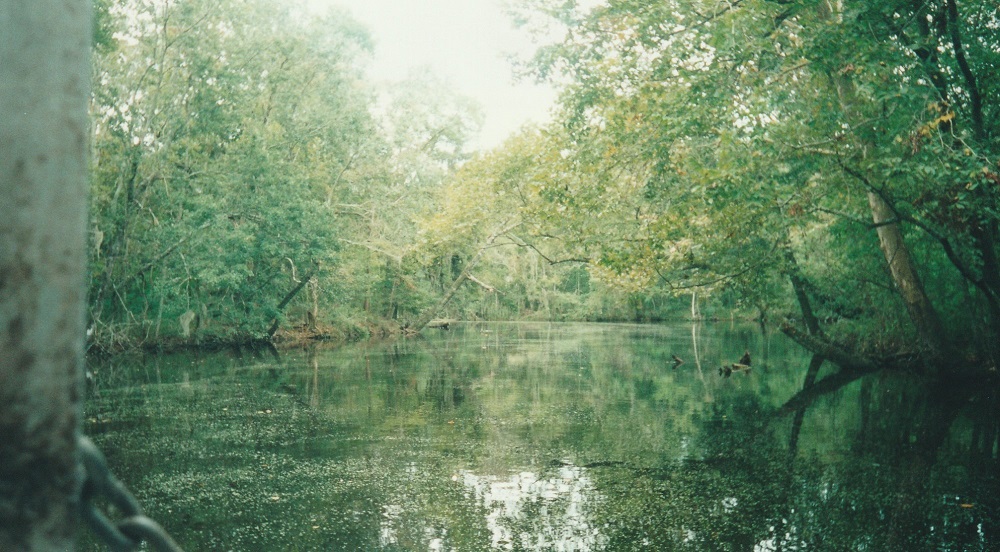
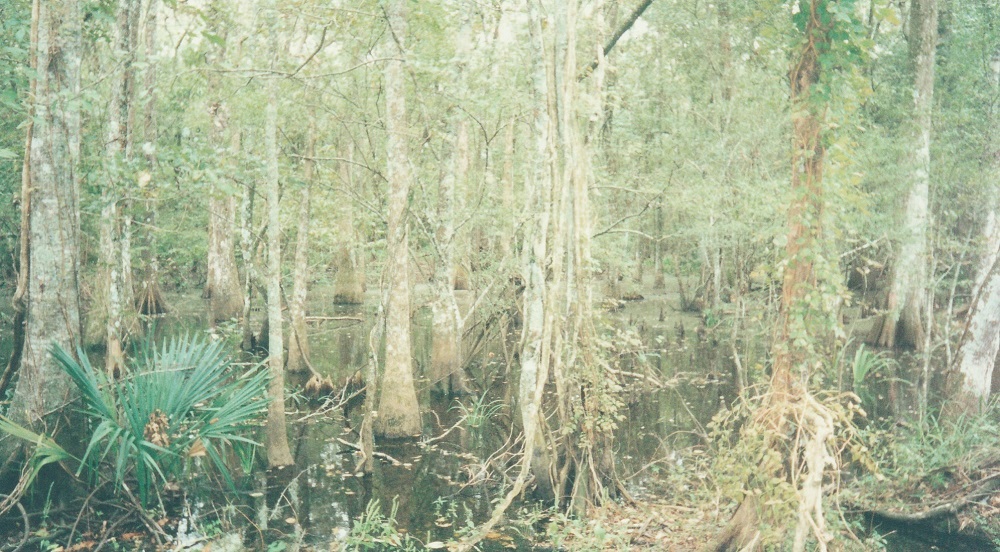
Incidentally, our guide, George, gave an interesting derivation of the word "bayou" - in Lousiana, you see, there's always water "by you."
We saw many trees draped with Spanish Moss. I've often heard of Spanish Moss, and seen it in pictures, but this was the first time I'd ever seen it up close and personal:

We saw several raccoons, which came to get some marshmallows that George threw out (look close, they're there):
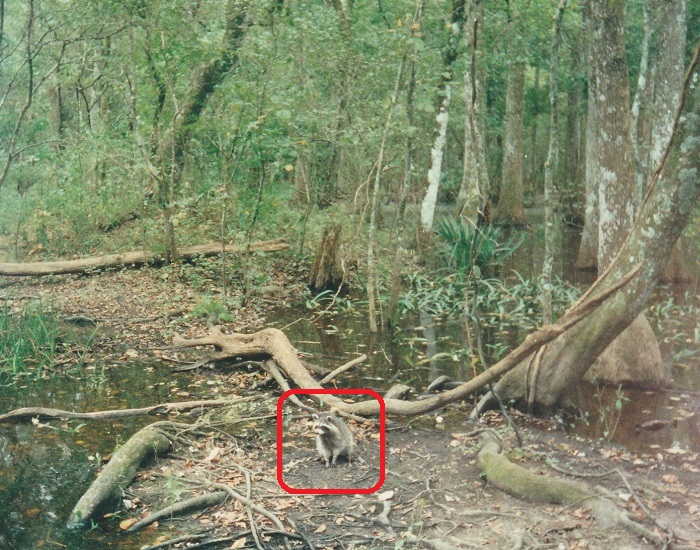
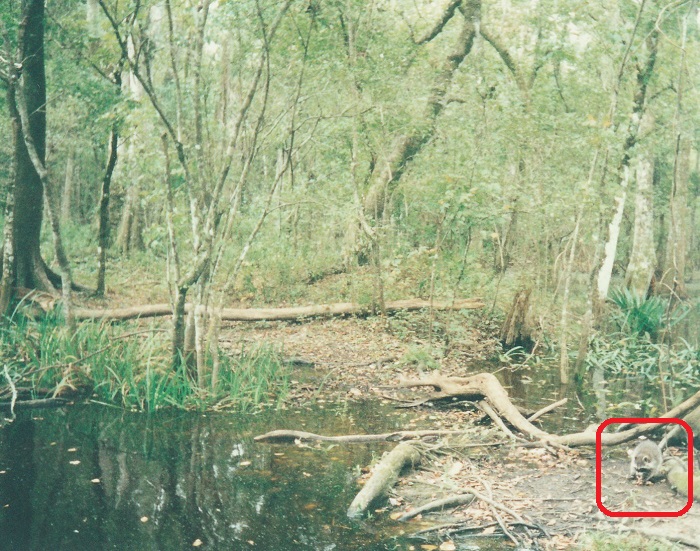
Then we actually saw some real live gators. Not very large ones - the largest we saw was about 6 feet. George would get their attention by tossing out more marshmallows. Apparently, the gators see the marshmallows floating on the water, and think they're baby ducks. So a gator comes gliding up to the marshmallow, with just its nostrils poking above the water; then, the jaws open up, and... SNAP!
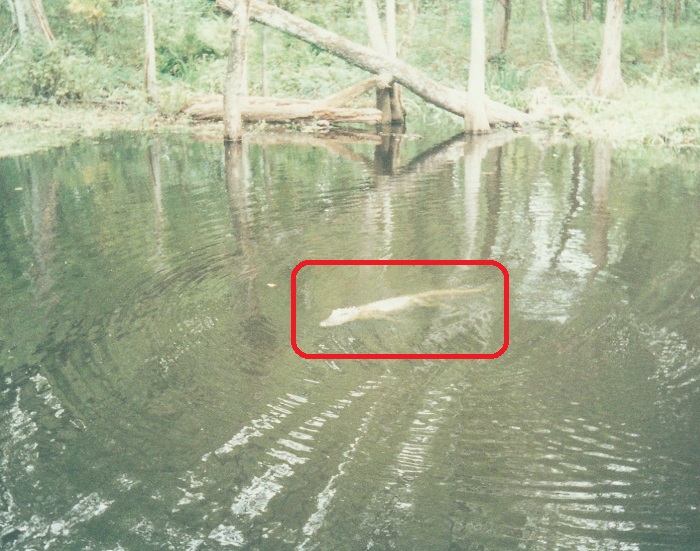
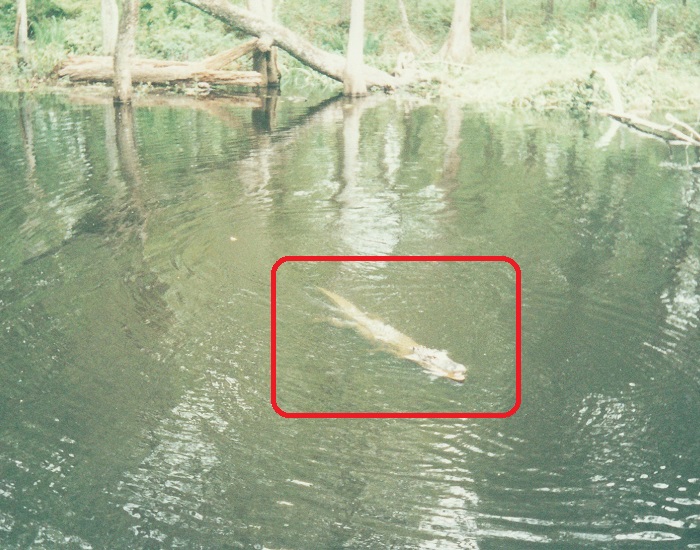
Here we see George standing on a platform on the side of the boat, holding out a chicken neck to a gator...
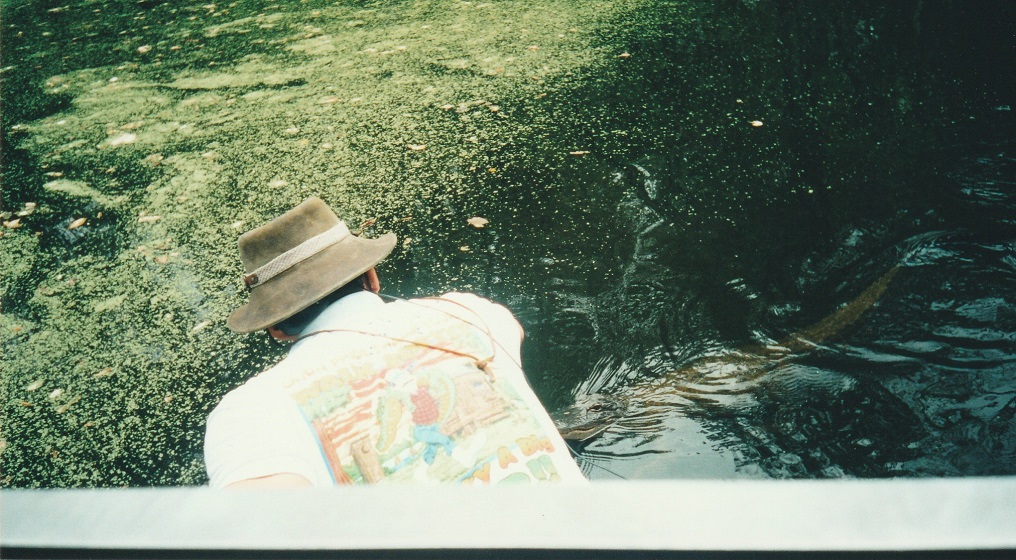
...and here we see the gator jumping out of the water to get the chicken. You're a braver man than I am, George!
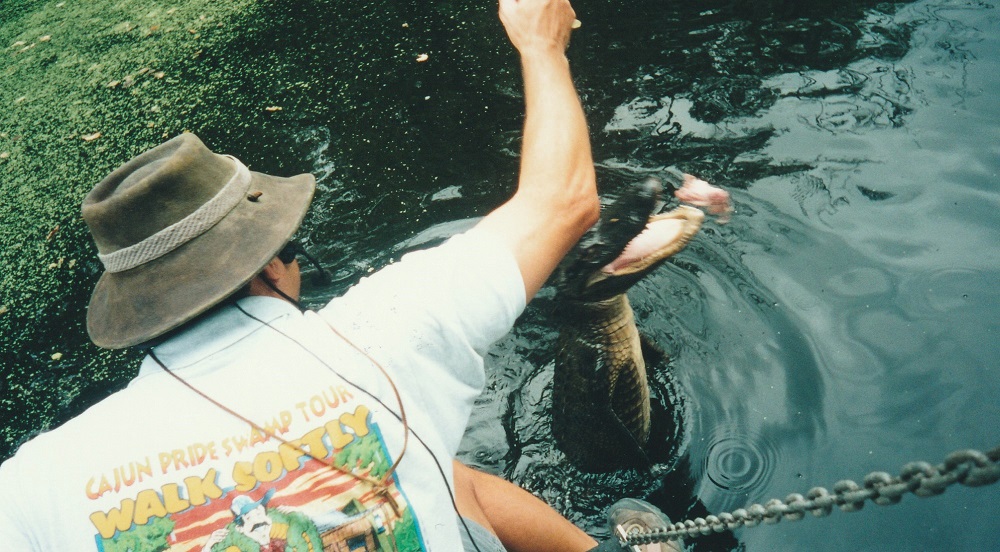
At one point on the tour, we went by a cabin, purporting to be an authentic Cajun style swamp cabin. Very Disneyland:
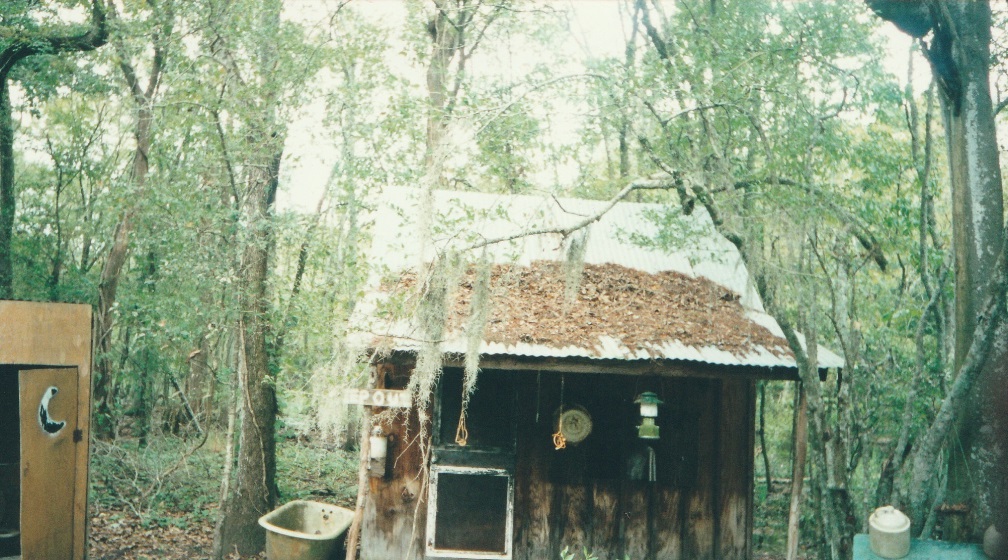
And here we see another gator coming to grab a chicken neck. In this case, the chicken was held by a clothespin, which was fastened with duct tape to the end of a long pole. The pole is then held out above the water, until the gator comes and grabs at the chicken. What the picture does not show is that Terry's holding the pole.
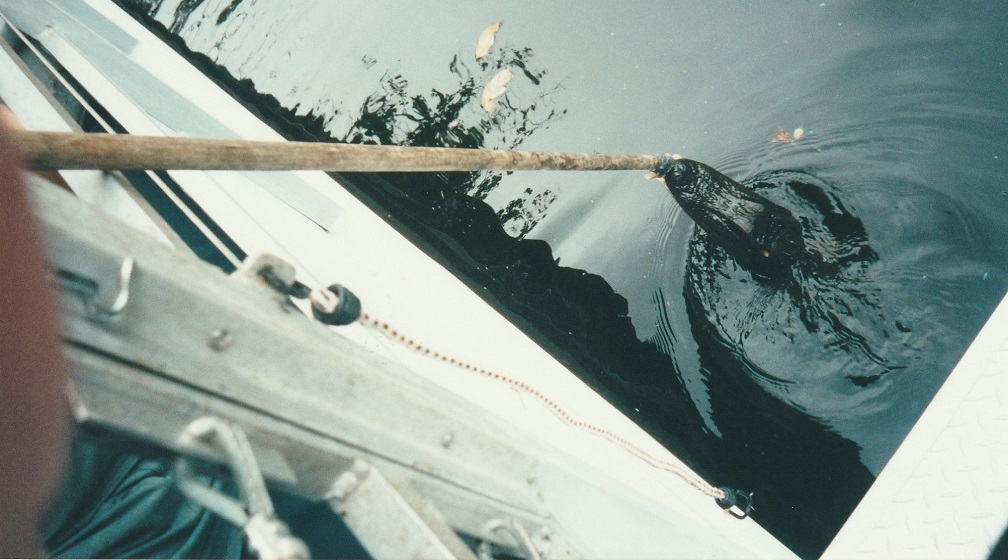
George then brought out a baby gator:
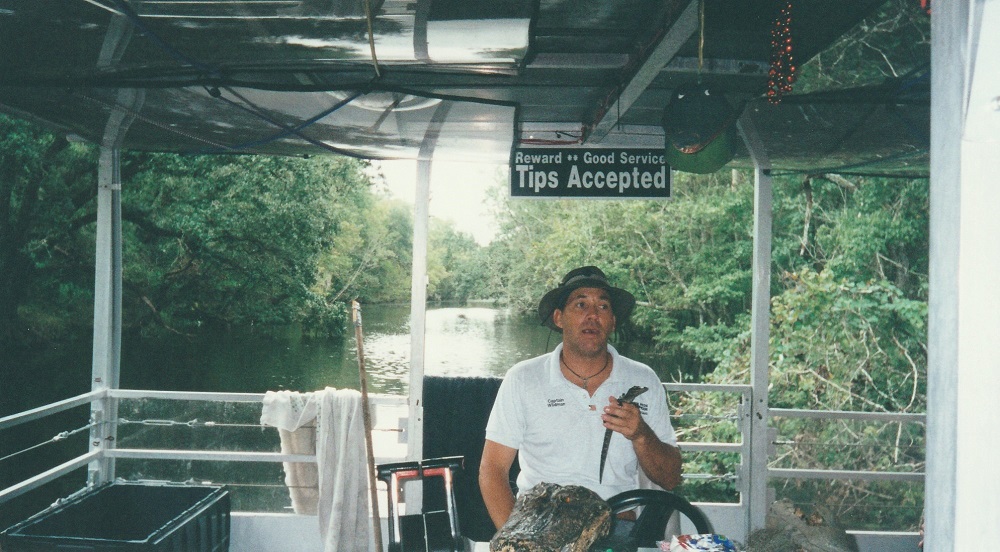
After showing us the baby gator, and talking about it, he passed it around. Here's Terry holding the gator (while the woman next to her tries to get as far away as possible):

In this picture, I'm holding the gator, while Terry is running her fingers over its bumpy back (I asked her what it said):
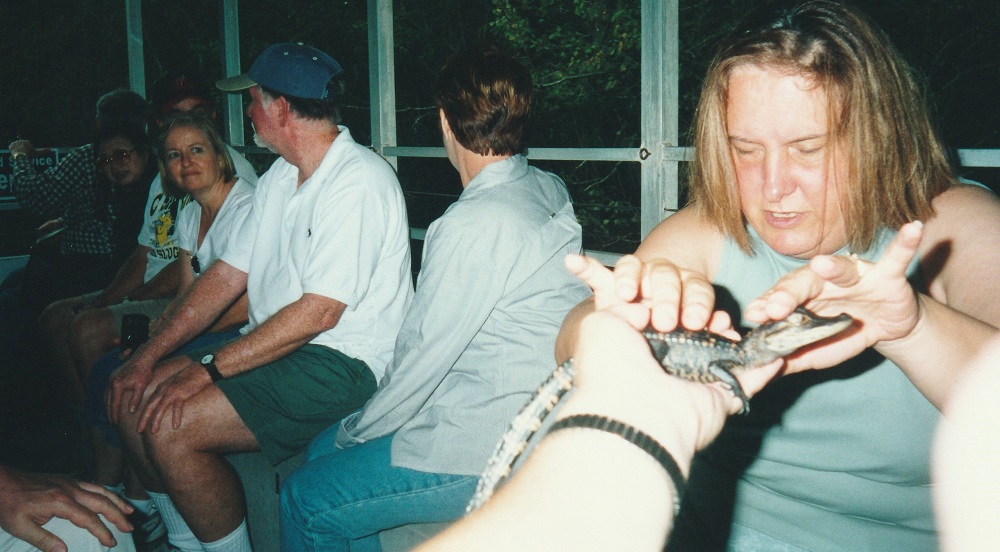
After the tour, we went back to N.O., and had lunch at the Cafe Beignet - red beans and rice - and split an order of beignets. This is another N.O. specialty; they're essentially squares of dough, deep fried like donuts, and covered with about a pound of powdered sugar. And here's Terry enjoying her lunch:
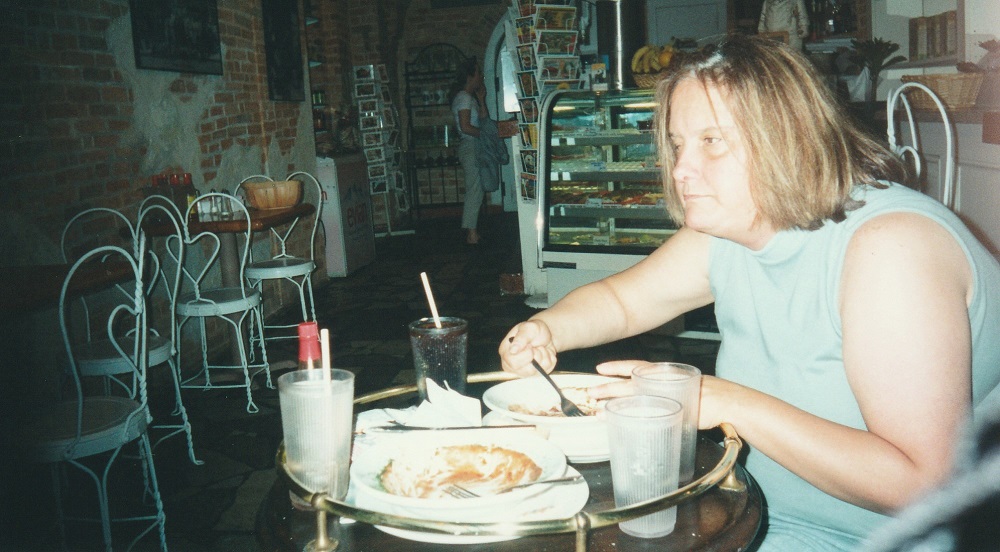
We then set off on a self-guided walking tour of the Quarter. We had picked up a brochure giving directions, and descriptions of the various buildings points of interest along the way. This picture shows... well, a building. I'm not sure why I took this picture - I guess I just thought the building looked interesting. It does show a good example of the second floor wrought-iron balcony railings, which are very common in the Quarter.
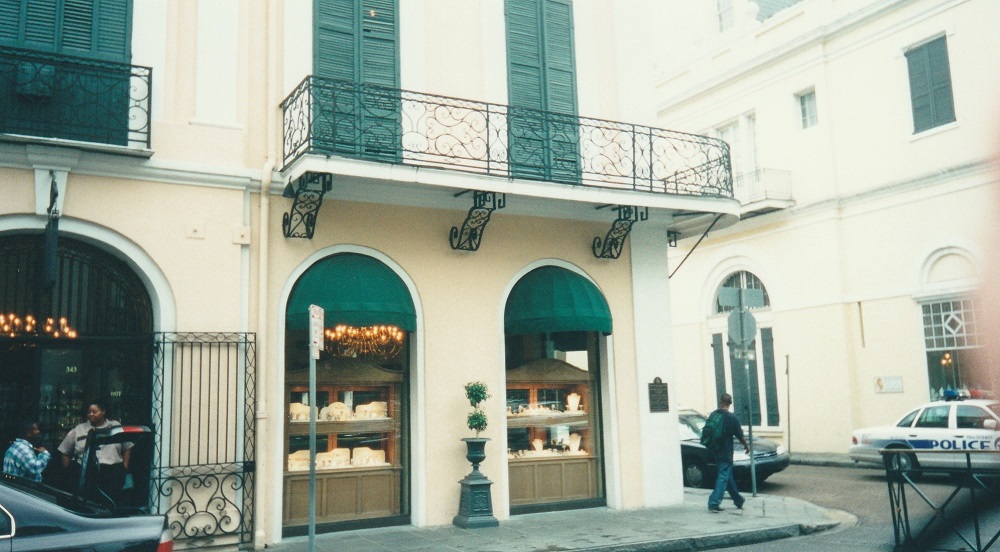
At one point on the tour, the brochure identified a building as being "New Orleans' first skyscraper" - all of three stories tall. I figured that was worth a picture, so I took this one:
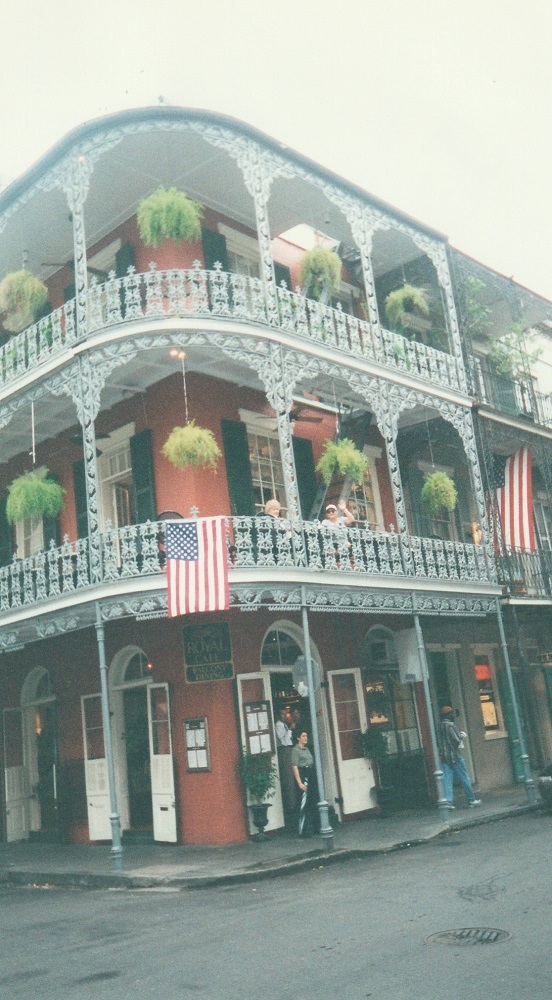
The building is now a restaurant, and a couple having lunch on the second floor balcony saw me aiming my camera, and waved. It wasn't till after I took the picture that I realized that I'd gotten the wrong building - the one the brochure referred to was across the street. Oh, well.
And here's another picture of Jackson Square, with St. Louis Cathedral - and Terry - in the background:
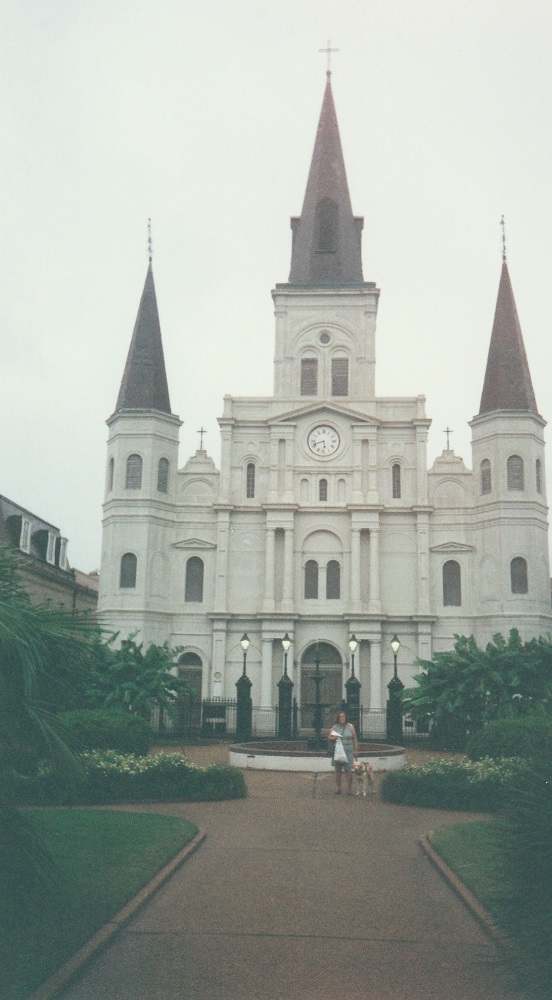
Along the way, we stopped in at some of the other components of the Louisiana State Museum. There's a building called the Presbytere, on the east side of the St. Louis Cathedral, which now houses a Mardi Gras exhibit, which I wanted to see. Alas, it was here that we ran into the only unpleasant note of the entire vacation; an ignorant security guard tried to keep Terry from bringing North in. Terry got upset, and we left.
We then went to the Cabildo, on the west side of the Cathedral. This used to be the Louisiana statehouse, when the area was under Spanish jurisdiction. It's now a history museum. We went in and registered an official complaint about our treatment at the Presbytere, and then toured the museum.
When we left the museum, it was raining, so we called off the walking tour for the nonce, and went and had dinner at Cafe Pontalba, on the west side of the square. After dinner, the rain had let up, so we finished the tour, and then stopped at La Madelaine for a pastry, and to kill some time before going to get in line for Preservation Hall.
Preservation Hall, on St. Peter St. (across from the Haunted History tours), is a New Orleans landmark. It's a small concert hall dedicated to the preservation of original New Orleans Dixieland jazz music. When I say "small," I mean SMALL - the room doesn't even hold a hundred people. There are three benches, and if the benches are full, you either stand in the back or sit on the floor. The show starts at 8, but if you want a seat, you'd better be in line by 7:30 at least.
Terry and I got in line early enough, and so got to sit down. We stayed through two sets. The room is not only small, but very plainly furnished. There's no stage, just a set of plain wooden chairs at the front of the room:
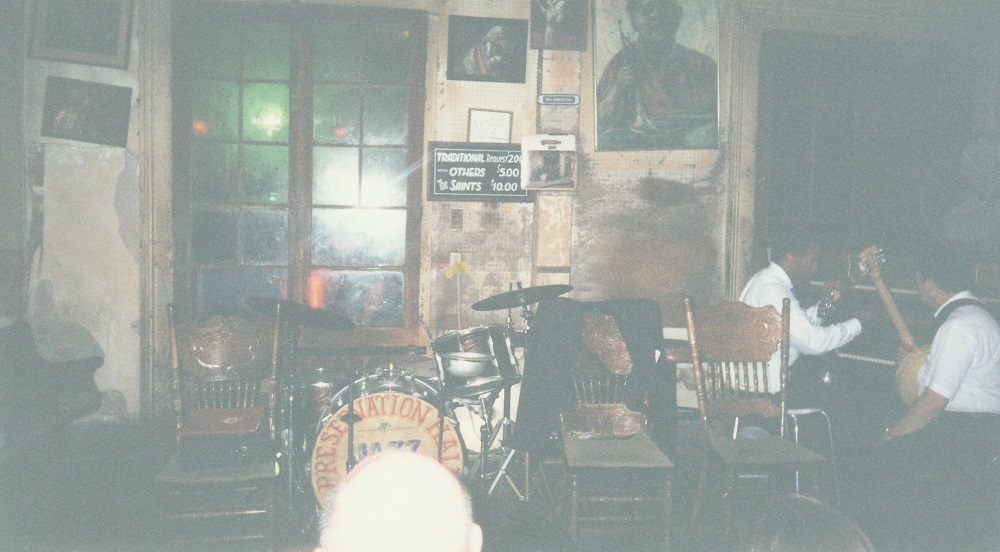
This was Terry's first time, but I had been there before, in 1974 and 1975, when I travelled around the country with my friend Bill Hunt. At that time, all of the performers were old men (and women), musicians who had been there since the music was new. At that time, Bill commented that it was almost as if the music was preserving the musicians, instead of the other way around.
In addition to performing at the Hall, the Preservation Hall Jazz Band also does regular concert tours. Actually, the word "Band" is a misnomer; there are actually several rotating bands, and I believe the musicians rotate among the bands. Anyway, over the years, I've seen them in concert several times, and I noticed that as time went by, there were fewer and fewer of the older musicians, and more and more younger musicians in the lineup. Of course, that's no mystery; the older ones were dying off, and a new generation was taking over, which is as it should be. Still, it was with some sadness that I noticed that, on this occasion, only two of the musicians (trombone and clarinet) were from the older generation, while the rest (trumpet, banjo, piano, bass, drums) were from the younger. Time doth indeed march on.